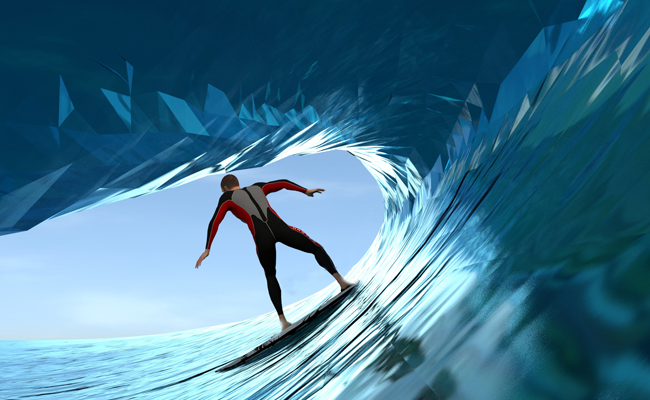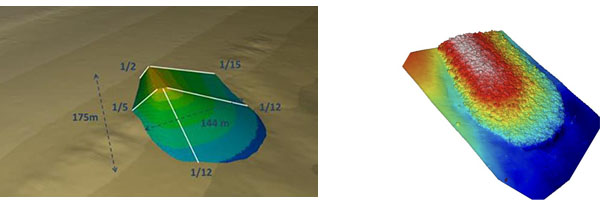
In 2015 DHI designed an innovative submerged artificial reef capable of maintaining a larger beach erosion buffer along the most sensitive part of the beach by inducing extensive wave dissipation over the crest during energetic wave events while at the same time enhancing surfing amenity. In April 2019, the actual reef construction commenced and was completed ahead of schedule in September 2019 by Hall Heron Joint Venture.
With the generally poor performance and public reception of past artificial reefs, it was evident from the start that this would be a challenging project beyond the ordinary.
'Since designing multipurpose reefs had already been attempted several times in the past 15 years, there was a tremendous pressure to make sure that we could incorporate all the lessons learned from past projects to overcome the problems. If it was not for the recent advances in advanced computer modelling in combination with our local knowledge of the location, it had probably not been possible to deliver a design that ticked all the boxes', explains Simon Mortensen, MSc, CPEng, Director, DHI Australia
Designing a complex artificial reef
The reef design itself has evolved from a rectangular submerged breakwater rotated obliquely to the incident wave direction and with mild seaward facing slopes merging into a conical wave focusing toe. The design used wave refraction to focus and intensify wave energy towards the shallow crest and as a result of this, further increase wave dissipation.
The crest level of the reef was set to 1.5 meters below mean sea level to make sure the reef crest remained submerged during low tide while still being able to induce wave breaking on most swell conditions. The shape of the reef was carefully designed to make sure that wave breaking on the reef occurred in a continuous and predictable fashion suitable to most surfers. A rubble mound rock boulder design was chosen as the best option to assure that the design shape could be achieved in construction and that its structural integrity could be assured during large storms.
Using the MIKE software suite to predict shoreline responses
To support the design process DHI utilised its marine MIKE software suite and most notably the MIKE 21 SM (Shoreline Morphology) module. The software was used to predict the Palm Beach shoreline response based on more than 30 years of historical conditions while using an integral phase resolving approach to incorporate the highly complex wave breaking and circulation processes. A detailed 3D VOF wave model OpenFoam, coupled with DHI’s inhouse surf simulation software, OptiSurf, was used to validate the surfing quality and safety of the design accounting for the effect of porous rock structure on wave breaking and energy dissipation.

Palm Beach Reef Concept Design (2015) 3D survey of Palm Beach Reef after construction (Veris Australia 2019)
Already before construction was fully completed, drone-video showed good quality surfing waves on the artificial reef. Watch the video to see people surfing the reef at 70% completion.